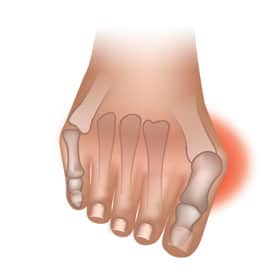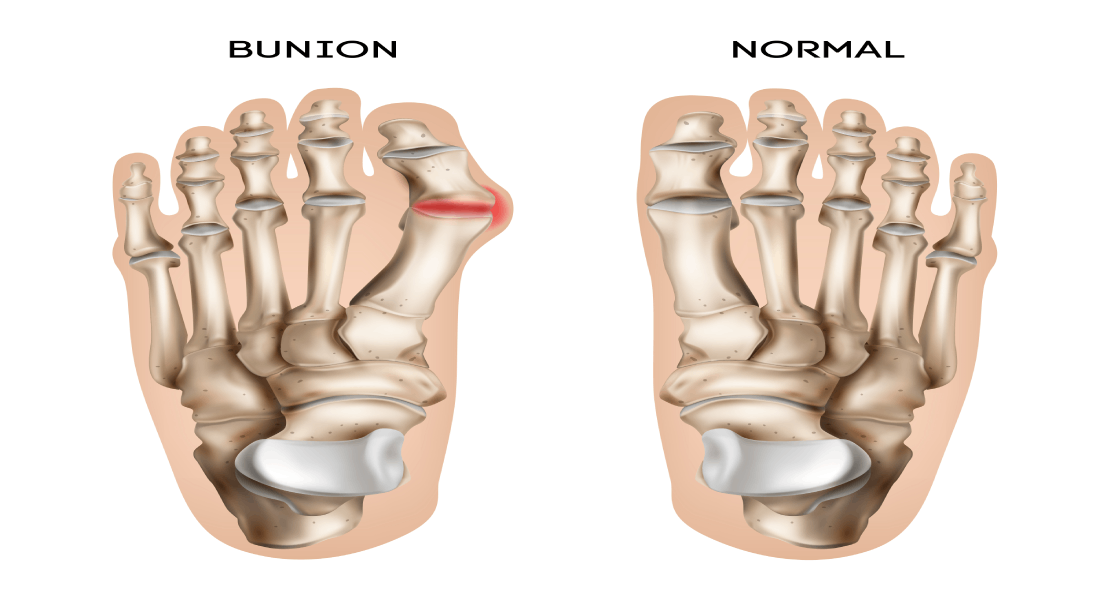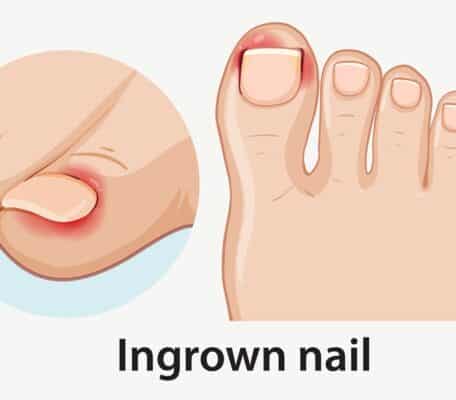
Bunions are a common foot problem affecting one in five adults. Although this 2018 post from Foot Solutions discussed the issue briefly, it’s time for an updated and in-depth look at bunions, including diagnosis, treatment options, and when bunion surgery may be necessary. We’ll explore the latest advancements and information to ensure you have a comprehensive understanding of this condition.
Understanding Bunions
A bunion, medically known as hallux valgus, is a bony bump that forms at the base of the big toe. This condition often leads to pain, discomfort, and difficulty in finding comfortable footwear. The key question remains: when should bunions be operated on?
Diagnosis and Early Intervention
Before discussing surgical options, it’s important to understand how bunions are diagnosed and what non-surgical treatments are available.
Diagnosis: Podiatrists typically diagnose bunions through a physical examination, analyzing the extent of the deformity and evaluating your symptoms. X-rays may also be used to assess the severity and to help plan the most appropriate treatment.
Non-Surgical Approaches: Not all bunions require surgical intervention. Many individuals can find relief through non-invasive methods, including:
- Proper Footwear: Footwear with a wide toe box can reduce pressure on the bunion, while high heels and narrow-toed shoes should be avoided.
- Custom Inserts: Custom orthotic inserts can redistribute weight and alleviate pressure, improving your comfort and mobility.
- Exercises: Podiatrists may recommend specific exercises to increase flexibility and reduce stiffness in the foot. These exercises can help slow the progression of the bunion and manage discomfort.
- Night Splints: Wearing a foot splint at night can help with alignment issues and reduce pain during the day.
- Medication: Anti-inflammatory medication can help reduce swelling and alleviate pain. Consult your healthcare provider for guidance.
- Ice Applications: Applying ice to the affected area can help with pain and inflammation management.
The Decision to Undergo Bunion Surgery
While many people can manage their bunions through non-surgical methods, some may require bunion surgery when conservative treatments are no longer effective. Here are key factors to consider when deciding whether surgery is the right option for you:
- Daily Activity Limitations: If your bunion pain significantly restricts your daily activities, even with custom inserts and appropriate footwear, surgical intervention may be recommended. The goal is to improve your quality of life and mobility.
- Constant Swelling: If you experience persistent swelling in your affected foot that does not respond to anti-inflammatory medications or other non-surgical methods, surgery might be necessary to address the underlying issue.
- Limited Toe Mobility: If you find it difficult to move or straighten your big toe due to your bunion, the discomfort may be severe. Surgical correction can enhance mobility and reduce discomfort.
- Big Toe Crossing Second Toe: When your big toe significantly overlaps or crosses over your second toe, it can lead to pain and mobility issues. Bunion surgery can realign the toe and alleviate these problems.
Bunion Surgery Options
Bunion surgery, or bunionectomy, aims to correct the alignment of the big toe and relieve associated pain. There are various surgical procedures, including:
- Osteotomy: In this procedure, the surgeon cuts and realigns the bones to correct the bunion’s deformity.
- Arthrodesis: Also known as joint fusion, this method involves fusing the joint at the base of the big toe to reduce pain and improve alignment.
- Resection Arthroplasty: This surgery involves removing part of the bunion and realigning the toe joint.
- Minimally Invasive Surgery: Some surgeons use minimally invasive techniques, which involve smaller incisions and potentially shorter recovery times.
Recovery and Post-Surgery Care
After bunion surgery, it’s essential to follow post-operative care instructions, including elevation, rest, and a gradual return to weight-bearing activities. Recovery times can vary, but it’s crucial to remain patient and attentive to your surgeon’s guidance to ensure a successful outcome.
Conclusion
Bunions are a common foot problem, and while not all cases require surgery, understanding the diagnosis, non-surgical treatments, and the indications for surgery is crucial. Consult with a podiatrist or orthopedic surgeon to determine the best course of action for your specific situation. Your journey towards pain-free and comfortable feet begins with informed decisions and professional guidance. Remember to consult your healthcare provider if you have any concerns about bunions or related foot conditions.




